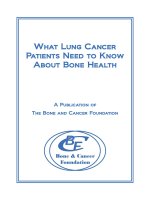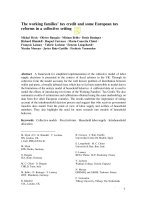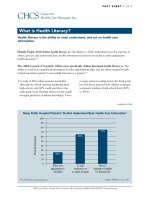The need to combine sentences and some common methods of sentence synthesis
Bạn đang xem bản rút gọn của tài liệu. Xem và tải ngay bản đầy đủ của tài liệu tại đây (12.02 KB, 1 trang )
The need to combine sentences and some common methods of
sentence synthesis
If all of your sentences were brief and of equal length, you will have a tough time keeping the reader engaged. By
combining short sentences into larger ones, you can add a bit of variety and keep the text alive and the reader
awake.
Writers employ several different techniques to combine sentences. In this lesson, we will explore some of these
methods.
Compounding Sentences
A compound sentence consists of two or more main or independent clauses. The clauses of a compound
sentence are sometimes separated by a semicolon.
I was hungry; therefore, I decided to eat something.
They were tired; nonetheless, they continued their journey.
Although a semicolon can be used to separate the clauses of a compound sentence, most writers prefer
connecting them with a coordinating conjunction. The most common coordinating conjunctions in English are: for,
and, nor, but, or, yet, so. Remember FANBOYS.
Winston Churchill is famous as a politician and statesman, but few people know of his contributions to
English literature.
Note that the clauses of a compound sentence are usually separated by a comma. The comma is not required if
the clauses are short.
She was thin but she wasn’t weak. (OR She was thin, but she wasn’t weak.)
He hadn’t received any formal training in mechanics, yet he invented many useful machines.
He was well trained by famous inventors, and went on to invent many useful machines.
She hasn’t got many friends, yet everybody seems to like her.
She must be asleep, for there is no light in her room.
The conjunction yet is sometimes combined with the conjunctions and and but. This usage is now considered
acceptable.
She hasn’t got many friends, and yet everybody seems to like her.
Stay on top of your writing! Download our grammar guide from www.englishgrammar.org to stay up-to-date.
Powered by TCPDF (www.tcpdf.org)









